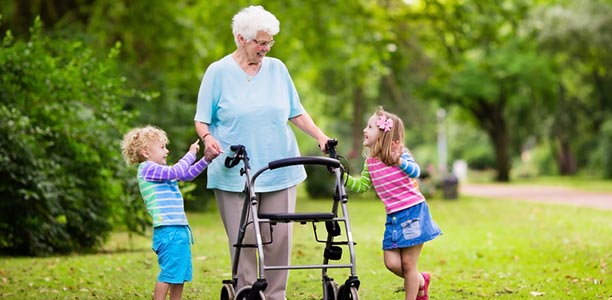Well-designed local parks full of stimulating and challenging experiences could inspire people of all ages to be physically active and help prevent obesity, diabetes and cardiovascular disease, says QUT landscape architect Dr Debra Cushing.
Dr Cushing heads a QUT transdisciplinary team of landscape architects, urban planners, and exercise physiologists, with significant experience working with children and ageing adults.
They have joined with Moreton Bay Regional Council to undertake an ARC Linkage project to investigate the key components and design considerations to create appealing all-ages local parks.
“We know that many of our local parks in suburban areas are boring and not stimulating when they could be places to which people naturally gravitate and exercise, almost without realising it, as well as relax and engage with their neighbours,” Dr Cushing said.
“We believe that parks with innovative facilities and an attractive environment could draw people in and promote enjoyable physical activity that would help address rising common lifestyle-related health conditions, particularly in at-risk communities.
“Our goal is to design green public spaces that are free for people of all ages to be physically active and socially engaged in order to reduce stress and recover from mental fatigue.
“It is unlikely that many of Australia’s 4,144,000 children aged 14 and under go to parks alone, thus attracting their parents, grandparents and carers is critical to improve park usage.”
Dr Cushing said researchers would head to 12 Moreton Bay Regional Council’s parks to observe park usage, as well as ask park users about what drew them there and which park amenities and features they used for physical recreation.
“We will also target non-park users in the same areas and ask them about the barriers they have to using parks and what could be done to address those,” she said.
“Parks are generally under-used as a place for exercise. A recent study in two Melbourne parks found 62% of visitors were sedentary – either lying, sitting or standing – with only 29% engaged in moderate activity. So we need to find out what we can do to promote more exercise in parks.”
Dr Cushing said research had shown that parks with unique features such as lakes, dog parks, water, or trails were more likely to be used.
“Enjoyable scenery, seeing others exercise, programmed activities, safe conditions and regular maintenance all contribute to higher usage.”
Moreton Bay Regional Council’s Spokesperson for Parks, Recreation and Sport, Councillor Darren Grimwade, said the Council was pleased to collaborate with QUT and looked forward to the outcomes of this exciting research project.
“Moreton Bay Regional Council is continually seeking to push the envelope and deliver fresh and imaginative playground designs and recreational spaces which appeal to young people of all ages and abilities across the Moreton Bay Region, which is one of Australia’s fastest growing and most diverse urban areas,” Cr Grimwade said.
“Recent examples include the delivery a new military-inspired Parkour obstacle course in Clontarf – just the second of its kind in Brisbane – and a new adventure playground recognising sensory needs in Pine Rivers Park in Strathpine, complete with hexagonal links and modular net obstacles, which supplements an existing children’s maze, pedal-powered train and even a nine-hole disc golf course on the site.
“The ARC Linkage research project is particularly exciting in its focus on intergenerational park access and usage, looking at not only attracting young people to park and recreational facilities, but also their parents, grandparents, and carers.
“Through this project, we hope to better understand how we can improve existing parks and create new parks and spaces across our region which encourage residents of all ages to head outdoors and spend longer socialising and participating in physical activity, in order to keep our communities connected and active.”
(Source: Queensland University of Technology)










